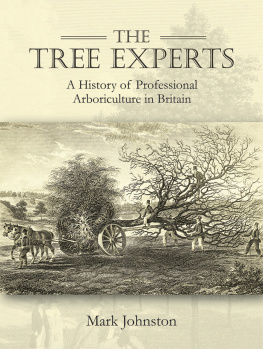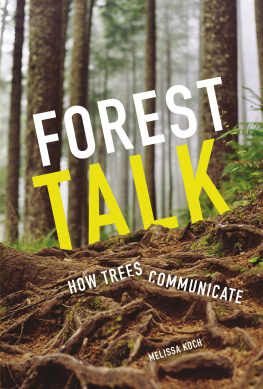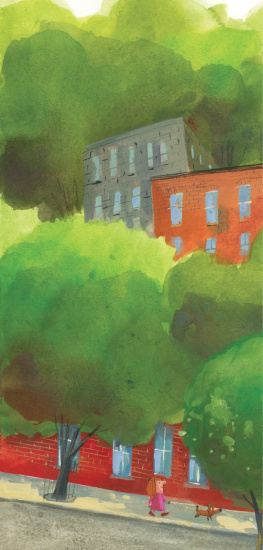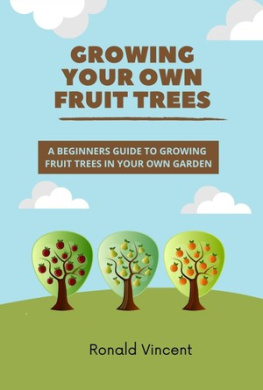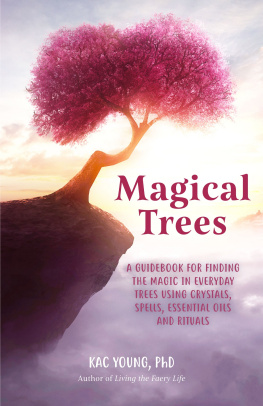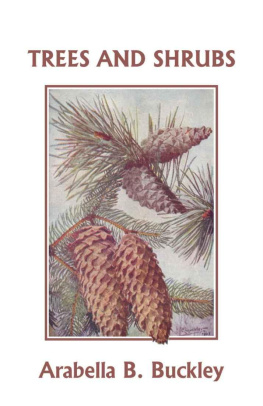Pagebreaks of the print version

The Tree Experts
A History of Professional Arboriculture in Britain
by Mark Johnston
Windgather Press is an imprint of Oxbow Books
Published in the United Kingdom in 2021 by
OXBOW BOOKS
The Old Music Hall, 106108 Cowley Road, Oxford, OX4 1JE
and in the United States by
OXBOW BOOKS
1950 Lawrence Road, Havertown, PA 19083
Windgather Press and Mark Johnston 2021
Hardback Edition: ISBN 978-1-91118-888-9
Digital Edition: ISBN 978-1-91118-889-6 (epub)
Kindle Edition: ISBN 978-1-91118-890-2 (mobi)
A CIP record for this book is available from the British Library
All rights reserved. No part of this book may be reproduced or transmitted in any form or by any means, electronic or mechanical including photocopying, recording or by any information storage and retrieval system, without permission from the publisher in writing.
For a complete list of Windgather titles, please contact:
| United Kingdom | United States of America |
| OXBOW BOOKS | OXBOW BOOKS |
| Telephone (01865) 241249 | Telephone (610) 853-9131, Fax (610) 853-9146 |
| Email: | Email: |
| www.oxbowbooks.com | www.casemateacademic.com/oxbow |
Oxbow Books is part of the Casemate group
Cover background : Richard Woodss elevated Elysian Walk on the opposite side of the canal at Hare Hall, Essex. Authors image.
Front cover : Sir Henry Steuarts transplanting machine in action in the 1820s moving a large tree in his landscape park at Allanton in Scotland. Authors image.
List of Figures
The images are from the authors personal library and image collection, unless otherwise credited in the caption, and then the necessary permission has been obtained .
| Fig. 1. | Trajans Column is a Roman triumphal column completed in 113 CE that survives intact in a public forum in Rome. Some of the reliefs that decorate the column depict scenes of soldiers from the engineering corps engaged in forestry operations. |
| Fig. 2. | The main fresco of the Garden Room at the Villa of Livia, in Primaporta, Rome, painted c . 30 BCE. The central tree is a pine, highlighted by a recess in the decorative wall, accompanied by fruit trees such as quince and pomegranate. |
| Fig. 3. | A modern replanting of the low box hedging at the Roman palace at Fishbourne, West Sussex. It is based on the original excavation and is thought to be the first evidence of topiary in Britain. Credit: Fishbourne Roman Palace/Sussex Archaeological Society. |
| Fig. 4. | An artists impression of Lullingstone Roman villa, West Sussex, in its landscape in the late fourth century. It shows a number of features requiring arboricultural or forestry expertise, such as ornamental garden trees, clipped shrubs, an orchard and managed woodland. Credit: Historic England Archive. |
| Fig. 5. | A selection of Roman horticultural tools including some with an arboricultural application. A: Pala lignea , a wooden spade, shown here with a curved iron shoe. B: Palas , iron spade shoe. C: Ferrea , iron three-pronged fork. D: Rastrum , six-pronged rake. E: Sarculum , hoe. F: Bidens , two-pronged hoe. G: Ascia-rastrum , double-headed hoe. H: Falx arboraria , pruning hook. I: Forfex , shears. Credit: Linda Farrar. |
| Fig. 6. | Manuscript image dated c . 1400 showing an enclosed garden at an English royal castle with a king and queen playing chess. The garden is subdivided by close-boarded fences. In another garden in the background a gardener is pruning a small tree with a billhook. Credit: The Bodleian Library, University of Oxford. |
| Fig. 7. | A tree pruner at work in late medieval times. This woodcut is from an edition of Crescenzis Liber Ruralium Commodorum ( c . 1480), although it probably dates from a much earlier edition. |
| Fig. 8. | Images of tree work from the eleventh-century English manuscript known as the Julius Calendar (Cotton Julius A. IV). The top image represents February and shows workers pruning trees. The image below represents June and shows workers felling trees with axes and loading a cart. Credit: British Library. |
| Fig. 9. | The most popular medieval topiary came in the form of estrade trees. The example shown on the left has two tiers encircled by iron bands. The image is dated 1461 but its origin is unknown. |
| Fig. 10. | Is this an example of poor tree-planting practice in medieval times? The bare-rooted tree has few roots and is being planted in full leaf. This woodcut is from an edition of Crescenzis Liber Ruralium Commodorum (c . 1480), although it probably dates from a much earlier edition. |
| Fig. 11. | An engraving of a geometric garden produced in 1583 by Hans Vredeman de Vries for his Viridariorumque Elegantes et Multiplicis Formae . It shows elaborately clipped trees in prominent positions within a labyrinth or mazelike design. |
| Fig. 12. | William Lawsons plan of an ideal garden from 1618. The parts where he refers to trees include A: All these squares must be set with trees; B: Trees 20 yards asunder; H: Walks set with great wood thick; I: Walks set with great wood round about your orchard; L: The out fence set with stone fruit. |
| Fig. 13. | Elizabethan gardeners building an arbour as a shade against the sun. The image is from Thomas Hills book The Gardeners Labyrinth (1577). |
| Fig. 14. | Part of the Wilderness at Wilton with its rigidly balanced groves on each side of the statue of Bacchus. This was a celebrated feature of the magnificent garden created for the fourth Earl of Pembroke around 1634 by Isaac de Caus. |
| Fig. 15. | The woodcut on the title page of The Crafte of Graffynge and Plantynge of Trees ( c .1520), the first work published in the English language of purely gardening interest. It depicts two men with axes, one in the process of cutting down a tree growing in a small plantation. |
| Fig. 16. | This illustration from Leonard Mascalls pioneering book on practical arboriculture, first published in 1569, shows contemporary arboricultural tools, many of which were used for pruning and grafting. |
| Fig. 17. | The frontispiece of William Lawsons A New Orchard and Garden (1618) immediately signals his focus on trees. This attractive woodcut shows three arborists planting and pruning fruit trees. |
| Fig. 18. | The perfect forme of a Fruit-tree from William Lawsons A New Orchard and Garden (1618). Lawson believed there are no limits to what form can be achieved through pruning. |
| Fig. 19. | This woodcut from Leonard Mascall (1569) shows three stages in the practice of cleft grafting. This is where a piece of sion wood is inserted into a slit made in the top of the stock. Note the thick coating of wax or grafting clay around the graft on the right. |
| Fig. 20. | This illustration from the anonymous work The Orchard, and the Garden (1594) shows an arborist pruning and patch budding a fruit tree. |
| Fig. 21. | An illustration from John Parkinsons Paradisi in Sole (1629) showing a range of tools and equipment for grafting and indicates some techniques. Note G which is the ladder and platform used for working at height in a tree. |

